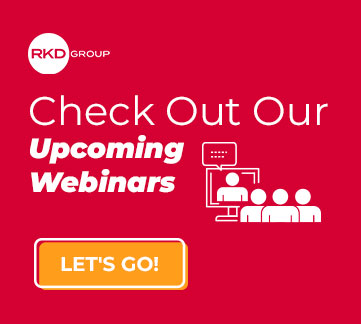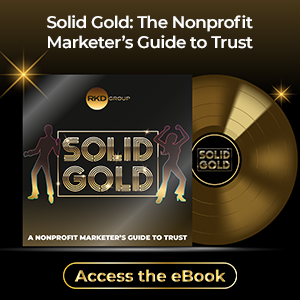We’ve seen seismic shifts in the way nonprofit organizations operate during the COVID-19 pandemic and the economic fallout it has brought. When it comes to fundraising, the loss of events and face-to-face canvassing has led some organizations to move to virtual events.
But not everyone is on board with the idea. A recent survey by CCS Fundraising shows that 38% of nonprofits have no plans to host a virtual event anytime soon.

If your organization falls into this category, it might be time to rethink that decision. Virtual events are not just a trend that will go away once the pandemic is over. They can be a true replacement for some in-person events and a complement to others.
Let’s look at why nonprofits should jump into virtual events.
A LESSON LEARNED FROM HISTORY
History has taught us that necessity is the mother of all invention, and times of crisis have always brought opportunity as well.
Savvy organizations lean into change and adapt to new realities. The Blockbusters of the world are slow to recognize trends and are resistant to trying new approaches.
Take Starbucks, for example. If you’re a fan of their coffee (like I am), you know that Starbucks coffee shops have long focused on being that “third place” between work and home.
Well, no one wants to hang out at a coffee shop during a pandemic. On top of that, Starbucks has recognized that some customers don’t ever want to hang out at a coffee shop – even in normal times. Roughly 80% of their transactions are for to-go orders.
Rather than resting on their past success, the world’s largest coffee company is looking to the future. Starbucks just announced the closing of 400 stores across the U.S. These stores will transform into new Starbucks Pickup locations – offering to-go and delivery service for orders through the mobile app.
What lesson can nonprofits learn from this?
Starbucks paid attention to the changes in the world and in the behavior of their customers. Rather than resist, the organization embraced the changes and offered an alternative model.
VIRTUAL EVENTS CAN COMPLEMENT IN-PERSON EVENTS
Much like the Starbucks Pickup locations, virtual events can be a terrific alternative model for nonprofits. They’re useful now – at a time when we can’t have in-person events – but they can also offer great benefits when in-person events return.
Here’s what that might look like from a financial perspective:
If you can fit 800 people at your annual gala, you set ticket prices at a rate that brings in your most-valued donors – let’s say $500 per ticket. You provide a nice meal and offer additional opportunities for donations to those in the room through the course of the evening. Many will be couples, which can cut those opportunities in half to 400.
The space of the venue limits the size of your audience, which limits the opportunities for charitable giving.
This is where virtual events represent a big opportunity for expansion. They can be inclusive for more donors and provide additional opportunities for stewardship. Virtual events can help nonprofits reach:

With a virtual event, you can still charge a premium for tickets that deliver a VIP experience. Maybe attendees get to “sit” with a big, important person in that organization and share their passion for your mission. You can even deliver a meal to their home, along with some small gifts, to bolster that special feeling.
But you can also offer a lower-cost opportunity to a much wider audience of your mass-market and mid-level donors – let’s say $25 per ticket. They don’t get a meal or the full VIP experience, but they can still watch the “main screen” of the event and participate in a live auction.
VIRTUAL EVENTS LOWER YOUR RISK
Tell me if this scenario sounds familiar:
You have a beautiful outdoor event planned. Caterers, music, celebrity guests – it’s going to be amazing. But as you watch the storm clouds roll in, you keep refreshing the weather app on your phone.
It doesn’t look good. You may have to move everything indoors or even cancel. Your phone rings. Your featured speaker cancels. What a mess.
Even before the COVID-19 pandemic, in-person events offered a lot of risks. Consider a few things that can go wrong:
- Weather causes a cancellation or postponement
- A major vendor pulls out at the last minute
- The venue cancels because of an emergency
Virtual events cost much less to put on, thus reducing the nonprofit’s risk. Nonprofits can still host in-person events, but they can reduce the number they host by moving some online. Doing so reduces risk and exposure while still providing the opportunity to connect with donors.
As your organization looks for ways to replace lost event revenue, you should jump into hosting virtual events. They will keep your nonprofit on the cutting edge of behavioral trends, offer new opportunities for donors and reduce your exposure to risk.
Not sure where to begin? We’ve got you covered with the key areas you should focus on to get started with virtual events.





Leave a comment: